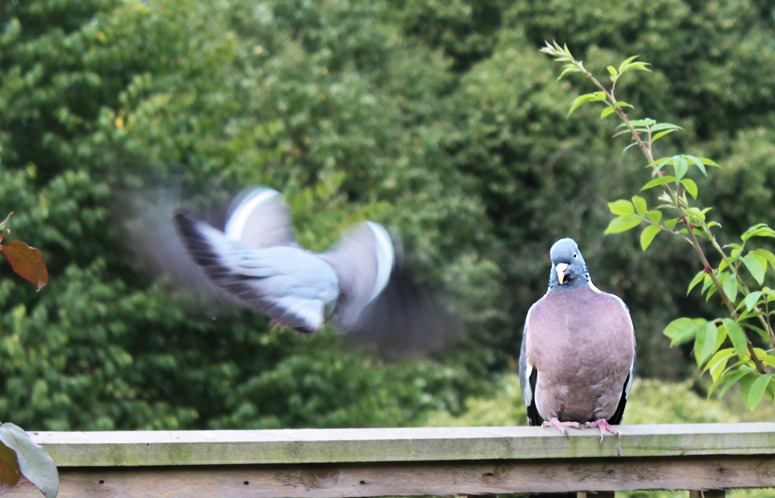 Or is Ken Yeang’s landscape architecture subject to the same criticism as Patrick Blanc’s green walls? I would of course be much happier if these approaches to landscape architecture were genuinely sustainable. But I have my doubts. My guesses are (1) the planted balconies will be great features for wealthy residents who have more than enough indoor space (2) less-wealthy residents, especially in inclement climates, would rather have more indoor space than a big balcony, though sliding doors would offer the choice of indoor or outdoor space (3) the extra habitat space will do a little good for biodiversity, accoustics, carbon balance etc (4) but all these benefits could be obtained at less cost by other means (5) real people would not produce the nice green fluff on Ken Yeang’s drawings: there would be no visual unity at all to the balconies. Some would be richly planted. Others would provide storage for mountain bikes, or washing lines, or bird cages, or plastic furniture and dead plants in ugly containers. That’s life.
Or is Ken Yeang’s landscape architecture subject to the same criticism as Patrick Blanc’s green walls? I would of course be much happier if these approaches to landscape architecture were genuinely sustainable. But I have my doubts. My guesses are (1) the planted balconies will be great features for wealthy residents who have more than enough indoor space (2) less-wealthy residents, especially in inclement climates, would rather have more indoor space than a big balcony, though sliding doors would offer the choice of indoor or outdoor space (3) the extra habitat space will do a little good for biodiversity, accoustics, carbon balance etc (4) but all these benefits could be obtained at less cost by other means (5) real people would not produce the nice green fluff on Ken Yeang’s drawings: there would be no visual unity at all to the balconies. Some would be richly planted. Others would provide storage for mountain bikes, or washing lines, or bird cages, or plastic furniture and dead plants in ugly containers. That’s life.
So I am a sceptic who hopes to be proved utterly wrong.
Monthly Archives: March 2011
Clean, green and responsive: the future of architecture?
Lumenhaus inspired by Mies Van der Rohe’s Fansworth House is described by Virginia Tech students as responsive architecture. Responsive architecture according to Nicholas Negroponte’s definition is “a class of architecture or building that demonstrates an ability to alter its form, to continually reflect the environmental conditions which surround it.”
The aim of Lumenhaus designers was to “maximise user comfort with environmental protection” to make the user’s life “simpler, more energy efficient and less expensive.” They say the goal was to balance design quality, resource conservation and energy efficiency to produce architecture which achieves “beautiful enduring sustainability.”
One of the most significant benefits of the Lumenhaus construction concept is that it is off-grid (with options for feeding energy to the grid where appropriate), prefabricated and transportable making it an ideal solution for remote housing (increasing production standards, optimizing costs and providing improved accessibility to remote locations), temporary housing (mining and student communities) and emergency housing (after natural disasters).
Landscape architects could contribute significantly to the concept by, among other strategies, incorporating green wall technology on the wall cladding and designing a compatible site responsive green roof space beneath a solar panel shaded umbrella roof.
Much ado about zero energy buildings
With the European Parliament mandating under the amended ‘Energy Performance of Buildings Directive’ that all new buildings are to be ‘zero energy’ by 2019 the heat is on to produce architecture and environments that contribute to more sustainable energy equations with a zero or positive bottom line.
According to 2006 figures from the US Department of Energy, energy use in the building sector in the US continues to increase “primarily because new buildings are constructed faster than old buildings are retired.” Essentially the net building stock in the US is increasing. The government is not predicting any reduction in demand for new buildings and so is pursuing a Zero Energy agenda. The authors of the report ‘Zero Energy Buildings: A Critical Look at the Definition’ say “because design goals are so important to achieving high performance buildings, the way a ZEB goal is defined is crucial to understanding the combination of applicable efficiency measures and renewable energy supply options.”
Under the (Zero Energy Building) ZEB definition four aspects of energy are considered: 1) net-zero site energy 2) net-zero source energy 3) net-zero energy costs and 4) net-zero energy emissions.
Chicago architect Zoka Zola has designed a zero energy urban home with a green roof for passionate gardeners. The green roof is designated as the zone for the home to extend in the future and for the installation of renewable energy infrastructure. The accessible green roofs encourage “bio-diversity and absorb water runoff, while insulating the interior and protecting the roof from thermal shock and ultra violet deterioration.” The tree in the south facing garden provides both beauty and summer shade. The garden also provides the outlook from the rooms with large south facing windows.
With designers giving functional, structural and aesthetic consideration to the zero energy buildings the green future is looking bright.
The passing of a friend: Anna Mendelson of the Angry Brigade
 Passing time on the web, I discovered that a long-lost friend died in 2009: Anna Mendleson.
Passing time on the web, I discovered that a long-lost friend died in 2009: Anna Mendleson.
I knew Anna for 3 days only. Drinking hot sweet tea with a friend at a cafe in Bodrum in 1968, I watched her climb out of an old landrover. She came over and asked if we were looking for a place to sleep, explaining that she had come to collect someone who had not arrived. We said ‘yes please’ and were driven on a rough track to a peaceful villa in a remote seaside village, where we spent time swimming, cooking and eating – for which Anna took no money. One night there was a village wedding. The unmarried girls from the village, in long dark clothes, took it in turn to do modest shuffles on a low stage. Each was greeted with mild applause. There was a little moonlight and a glow from some tungsten bulbs. Anna, in a very short orange dress, then took the stage and lit up everything. She did a wildly energetic dance with bare limbs shooting in every direction. All the fire of the 1960s was there. This led to a storm of applause from the menfolk and dark frowns of frozen fury from the girls. The next I heard of Anna, she was arrested for being a member of the Angry Brigade. The police arrived and were horrified to find a large room with many people and a doorless doorway beyond which was a visible toilet with a girl using it. The police were genuinely horrified and, not for this reason alone, Anna was sent to jail for ten years. They released her on bail after four years. She changed her name and became a poet. I believe she was a kind person and wrongly convicted. Given all the police fabrication of evidence for terrorist trials since that date, I am convinced that Anna told the truth at her trial – and that the police lied. One can but remember Kipling’s words, after the death of his son in the First World War: “If any question why we died/ Tell them, because our fathers lied.” Here is one of Anna’s poems, published under the pseudonym Grace Lake:
i.m. Laura Riding
if thought be woven from the brain wished ill may learn to love again
a moonlit dusk by lamplight’s side a less anxious life
where proof of purse is not in pride nor strife a jokey vendetta
beginning twice more to examine extremes of sanctioned shapes
which knew to lighten mechanics with previewed disfunction
once the essentials are proven and normalities intergraved
it will not be mine to decide who are the damned and who the saved.
She died age 61 and here is her obituary. RIP
Even in Buscot Park, the course of true love never does run smooth
Clean: but is it green?
Vermont’s thirty eight year old Yankee Nuclear Reaction is scheduled to be shut down in 2012. The main cause of concern is the leaking of tritium which is linked to cancer.
The life expectancy of nuclear power plants is forty years. Seventy five percent of all current nuclear power plants are in the second half of their expected life span.
After a plant is decommissioned there are a series of steps that must be taken including “removal and disposal of all radioactive components and materials, and cleanups of any radioactivity that may remain in the buildings and on the site.”
Machinery breakdown in the differing reactor designs is the major cause of nuclear insurance losses. Loses due to fire most frequently occur around six years of age.
The Convention on Nuclear Safety was adopted in 1994. “Its aim is to legally commit participating States operating land-based nuclear power plants to maintain a high level of safety by setting international benchmarks to which States would subscribe.”
Beyond the design of nuclear power plants and their landscape surrounds is the question of the disposal of nuclear waste.
How confident are designers, engineers and geologists of the long term safety of nuclear waste storage strategies?




